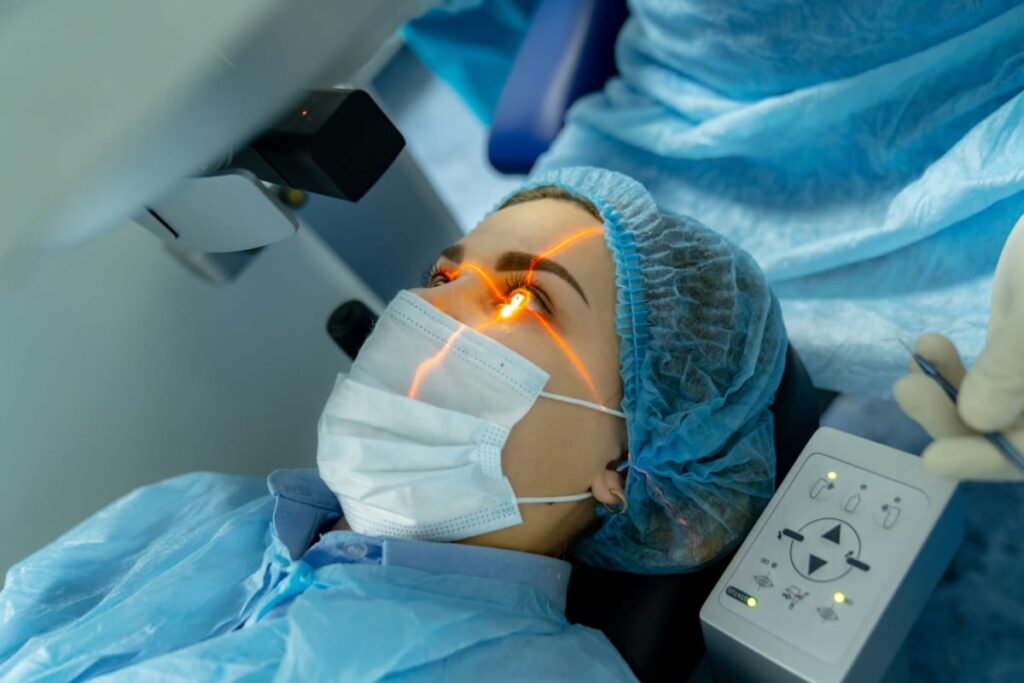Laser eye surgery has become an increasingly popular option for those seeking to correct vision problems. With its minimally invasive nature and quick recovery times, many Australians are considering this procedure. However, one of the most pressing concerns for potential patients is the cost associated with laser eye surgery. This article aims to break down the various factors influencing the price of laser eye surgery in Australia, providing clarity and guidance for those contemplating the procedure.
What is Laser Eye Surgery?
Laser eye surgery encompasses a range of procedures designed to correct refractive vision issues, such as myopia (nearsightedness), hyperopia (farsightedness), and astigmatism. The most common types of laser eye surgery include LASIK, PRK (Photorefractive Keratectomy), and SMILE (Small Incision Lenticule Extraction). Each of these procedures employs laser technology to reshape the cornea, allowing light to focus correctly on the retina.
Understanding the specific type of surgery and laser eye surgery cost is crucial, as costs can vary significantly between different procedures. For instance, LASIK is often the most well-known and widely performed, but it may not be the best option for everyone. Consulting with an eye care professional can help determine the most suitable procedure based on individual needs and circumstances.
In addition to the primary procedures, it is important to consider the pre-operative and post-operative care involved in laser eye surgery. Prior to the procedure, patients typically undergo a comprehensive eye examination to assess their suitability for surgery. This may include measuring the thickness of the cornea, mapping the surface of the eye, and evaluating overall eye health. Post-surgery, patients are often advised to follow a strict regimen that includes using prescribed eye drops to prevent infection and promote healing. Many individuals experience improved vision within a day or two, but full recovery can take several weeks, during which it is crucial to attend follow-up appointments to monitor progress.
Moreover, the advancements in laser technology have significantly enhanced the safety and effectiveness of these procedures. For example, the introduction of wavefront technology allows for a more personalised treatment approach, tailoring the surgery to the unique imperfections in a patient’s vision. This means that not only can common refractive errors be corrected, but also higher-order aberrations, which can contribute to issues such as glare and halos around lights. As a result, many patients report a higher quality of vision post-surgery, making laser eye surgery an increasingly popular choice for those seeking a long-term solution to their vision problems.
Factors Influencing the Cost of Laser Eye Surgery
The cost of laser eye surgery in Australia can vary widely, influenced by several key factors. Understanding these elements can help potential patients make informed decisions regarding their eye care.
1. Type of Procedure
As mentioned earlier, the type of laser eye surgery chosen plays a significant role in determining the overall cost. LASIK, for example, typically ranges from AUD 2,000 to AUD 3,500 per eye, while PRK may cost slightly less, averaging around AUD 1,500 to AUD 3,000 per eye. SMILE, being a newer technology, can be on the higher end, often exceeding AUD 3,500 per eye. Patients should consider the long-term benefits and potential savings from not needing glasses or contact lenses when evaluating these costs. Additionally, it is important to note that each procedure has its own set of advantages and disadvantages, which can also influence a patient’s choice beyond just the financial aspect. For instance, LASIK is known for its quick recovery time, while PRK may be more suitable for those with thinner corneas.

2. Surgeon Experience and Reputation
The qualifications and experience of the surgeon performing the procedure can also impact the cost. Highly skilled and reputable surgeons may charge more for their services, reflecting their expertise and the quality of care provided. While it may be tempting to opt for a less expensive option, investing in a qualified surgeon can lead to better outcomes and reduced risks of complications. Furthermore, many experienced surgeons often have a wealth of patient testimonials and success stories, which can provide reassurance to prospective patients. It is advisable to seek out consultations with multiple surgeons to gauge their approach and comfort level, as the relationship between patient and surgeon can significantly affect the overall experience.
3. Technology Used
The technology employed during the surgery is another crucial factor affecting the price. Advanced laser systems, such as femtosecond lasers, may come with higher costs due to their precision and safety features. Clinics that invest in state-of-the-art equipment often charge more, but this can result in a more comfortable experience and better visual results. Moreover, the integration of innovative technologies, such as wavefront-guided LASIK, allows for personalised treatment plans tailored to the unique visual needs of each patient. This level of customisation can enhance the quality of vision post-surgery, making it a worthwhile consideration for those seeking optimal outcomes.
Average Costs of Laser Eye Surgery in Australia
While costs can vary, understanding the average prices for laser eye surgery can provide a useful benchmark for potential patients. Generally, the total cost for laser eye surgery in Australia ranges from AUD 2,000 to AUD 4,500 per eye. This price typically includes pre-operative assessments, the surgery itself, and post-operative follow-up appointments. It is important to note that the cost may also depend on the specific technology used during the procedure, as advancements in laser technology can influence pricing. For instance, procedures using the latest wavefront technology or custom LASIK may be on the higher end of the spectrum, reflecting the enhanced precision and outcomes they offer. Read more about technology at https://aimseducation.edu/blog/the-impact-of-technology-on-healthcare
Payment Options and Financing
Many clinics offer various payment options to help patients manage the cost of laser eye surgery. Some may provide payment plans that allow patients to pay off the procedure over time, making it more accessible for those who may not have the funds readily available. Additionally, some health funds in Australia may cover part of the costs associated with laser eye surgery, so it is advisable to check with your provider to understand your entitlements. Furthermore, some clinics may also offer promotional financing options or discounts for upfront payments, which can significantly reduce the overall financial burden. It is wise for patients to explore all available options and choose a plan that best fits their financial situation.
Hidden Costs to Consider
When budgeting for laser eye surgery, it is essential to consider any potential hidden costs that may arise. These can include fees for pre-operative consultations, additional tests, or post-operative medications. Patients should ensure they have a clear understanding of what is included in the quoted price and inquire about any potential extra charges to avoid surprises. Additionally, there may be costs associated with follow-up visits that are not covered in the initial quote, particularly if complications arise or if further treatment is needed. It is advisable for patients to discuss these aspects with their surgeon during the consultation phase to ensure they are fully informed and prepared for the financial commitment involved.
Is Laser Eye Surgery Worth the Cost?
Determining whether laser eye surgery is worth the investment involves weighing the costs against the potential benefits. For many individuals, the prospect of improved vision without the need for glasses or contact lenses is a compelling reason to proceed with the surgery. Additionally, considering the long-term savings on eyewear can further justify the expense.
Quality of Life Improvements
Many patients report significant improvements in their quality of life following laser eye surgery. The freedom from glasses or contact lenses can enhance daily activities, such as sports, travel, and even simple tasks like reading or driving. These improvements can lead to increased confidence and overall satisfaction, making the financial investment worthwhile for many.
Long-Term Cost Savings
When evaluating the cost of laser eye surgery, it’s essential to consider the long-term financial implications. Over time, the expenses associated with purchasing glasses, contact lenses, and related accessories can add up significantly. For some individuals, the upfront cost of surgery may ultimately be less than the cumulative cost of maintaining corrective eyewear over the years.
Preparing for Laser Eye Surgery
Preparation is key to ensuring a successful laser eye surgery experience. Patients should take several steps before undergoing the procedure to maximise their chances of a positive outcome.
Consultation and Assessment
The first step in the preparation process is attending a thorough consultation with an eye care professional. During this appointment, the surgeon will assess your eye health, discuss your vision goals, and determine the most suitable procedure for your needs. This assessment may also include various tests to measure your corneal thickness, refractive error, and overall eye health. Click here to find more about assessment.
Understanding the Recovery Process
It is crucial for patients to understand the recovery process associated with laser eye surgery. While many individuals experience improved vision almost immediately, some may encounter temporary discomfort or visual disturbances during the healing period. Knowing what to expect can help patients feel more prepared and at ease following the procedure.
Post-Operative Care and Follow-Up
After undergoing laser eye surgery, proper post-operative care is essential for achieving optimal results. Patients should adhere to their surgeon’s instructions regarding medication, follow-up appointments, and lifestyle adjustments.
Importance of Follow-Up Appointments
Follow-up appointments are vital to monitor the healing process and ensure that the eyes are responding well to the surgery. During these visits, the surgeon will assess visual acuity, check for any complications, and provide guidance on when to resume normal activities. Patients should prioritise these appointments to ensure the best possible outcome.
Long-Term Eye Health
Maintaining long-term eye health is crucial after laser eye surgery. Patients should continue to have regular eye examinations, even if they no longer require corrective lenses. This ongoing care can help detect any potential issues early and ensure that vision remains sharp and healthy.
Conclusion
Understanding the cost of laser eye surgery in Australia involves considering various factors, including the type of procedure, surgeon experience, and technology used. While the initial investment may seem significant, the long-term benefits and quality of life improvements can make it a worthwhile consideration for many individuals.
By taking the time to research and prepare for the procedure, patients can approach laser eye surgery with confidence, knowing they are making an informed decision about their eye health. Ultimately, the goal is to achieve clearer vision and a more fulfilling lifestyle, free from the constraints of glasses or contact lenses.
For those contemplating laser eye surgery, it is advisable to consult with a qualified eye care professional to discuss individual needs and expectations. With the right information and support, achieving optimal vision is within reach.

